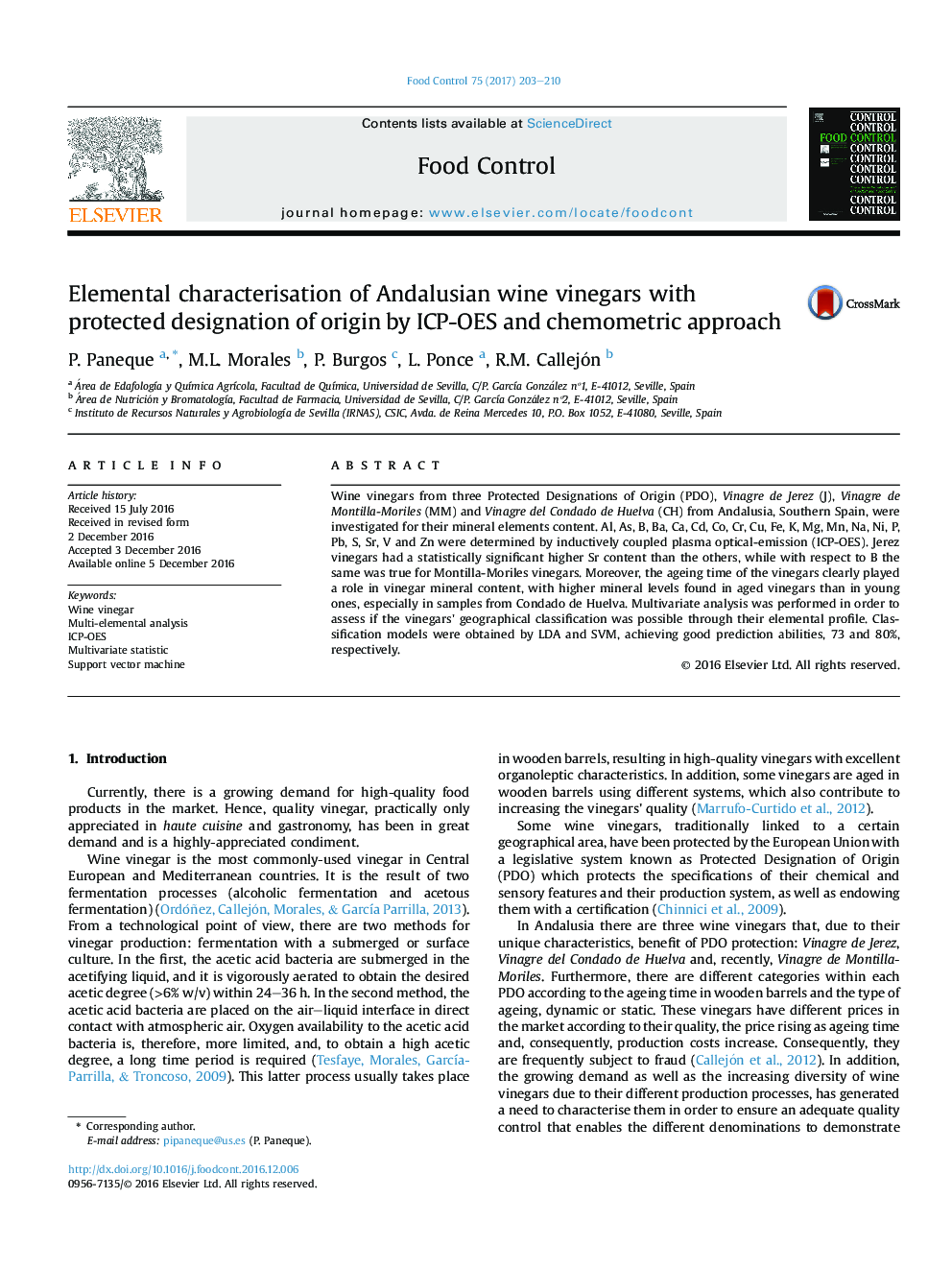| Article ID | Journal | Published Year | Pages | File Type |
|---|---|---|---|---|
| 5767408 | Food Control | 2017 | 8 Pages |
â¢Multi-elemental analysis of Andalusian wine vinegars from three PDOs was performed.â¢21 elements were determined by ICP-OES.â¢Chemometric tools were used for classification purposes.â¢Sr differentiated Jerez vinegars of Montilla-Moriles and Condado de Huelva ones.â¢Good vinegars classification according to geographical origin and ageing time.
Wine vinegars from three Protected Designations of Origin (PDO), Vinagre de Jerez (J), Vinagre de Montilla-Moriles (MM) and Vinagre del Condado de Huelva (CH) from Andalusia, Southern Spain, were investigated for their mineral elements content. Al, As, B, Ba, Ca, Cd, Co, Cr, Cu, Fe, K, Mg, Mn, Na, Ni, P, Pb, S, Sr, V and Zn were determined by inductively coupled plasma optical-emission (ICP-OES). Jerez vinegars had a statistically significant higher Sr content than the others, while with respect to B the same was true for Montilla-Moriles vinegars. Moreover, the ageing time of the vinegars clearly played a role in vinegar mineral content, with higher mineral levels found in aged vinegars than in young ones, especially in samples from Condado de Huelva. Multivariate analysis was performed in order to assess if the vinegars' geographical classification was possible through their elemental profile. Classification models were obtained by LDA and SVM, achieving good prediction abilities, 73 and 80%, respectively.
